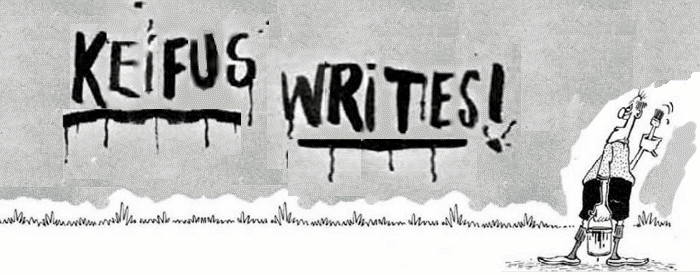Review: Jack of Kinrowan, by Charles De Lint
Jack of Kinrowan is an omnibus edition containing Jack the Giant-Killer and Drink Down the Moon. They’re urban fantasies set amid the greener corners of Ottawa, following the adventures of Jacky Rowan, who, along with a few other twentysomething types, weaves in and out of the parallel faerie dimension to face an assortment of its more unpleasant denizens, and nudge the fair folk from their habitual fecklessness in the pursuit of a quest or two. The plot of Jack the Giant-Killer is nearly revealed by the title: it has Jacky and her more pragmatic friend Kate barge rather recklessly into a serious political situation among the magical people, but they manage, with timely help, quick judgments, and an amazing dose of luck, to confront and prevail over the darker hordes. In Drink Down the Moon, Jacky and Kate, now promoted to official guardianship roles, come in late to assist against a new threat to the unaligned faeries of the Ottawan Elsewhere, which has already dragged in human musician Johnny Faw, and has robbed the wild sidhe of a leader for their life-sustaining full-moon wander.
So. As a personal bit of background, I recall Giant-Killer, getting some informal praise on the science fiction circles I lurked back in the early 90s, to the extent that I thought it might be worth reading at some point or other. The first of the two was published in 1987, at a time when urban fantasy was gelling into something of a sub-genre, but a good decade and a half before it took off deeply into teen fiction. Emma Bull’s War for the Oaks, for example, came out in the same year, and I read that one based on similar acclaim from that group; John Crowley’s Little Big, which is one of the most brilliantly endearing books ever, came out just a couple years before (and if it didn’t define the genre, then it should have retired it). Authors were still busy updating the world of fairytales to modern times, and reclaiming them for adult readers. Meanwhile, one of my real-life friends enjoys Charles de Lint, and for this reason alone, I am inclined to find out what’s good about these particular stories.
The de Lint stories are both quick and economical reads, and I take them as quality little escapes. They’re not especially heavy on inner psychological drama, but they offer just enough depth of character to make the people interesting, just enough personal challenge to get us on their side, just enough threat from the mages and goblins to worry about them making it out of it. Jacky’s had some bad luck with relationships, and we catch her feeling sorry for herself at the end of one, but her strength is credible enough, something that people with better judgment can readily see. It’s fun to put an independent woman in a fantasy quest role too, without ever once turning her into an action hero or giving her a savior complex. Johnny we find facing the recent loss of his grandfather and musical mentor, and uncovering the inherently tragic relationships the old man had in his life. The human characters are all young and single, and if their world-wide-open mindset, and the mild romantic subtext that doesn’t neglect to pair off the attractive people appropriately at the end, tends to be a little much for my old jaded self right now, then I’m at least assured that all the characters are pushing 50 here in 2012.
Although there is some necessary dissection of “the rules,” and a background of how the (even) fair(er) folk immigrated to North America, it doesn’t strive to the ponderous level of Big Idea. The magical characters remain true to their natures, but de Lint doesn’t make them inaccessibly mercurial and fey, or which are convenient for them. They think and reason like anyone else, and have made the concessions to modernity that they have to. Refreshingly, the humans react fairly understandably to discovering them. They doubt it’s real, but de Lint doesn’t take the conceit that the characters have somehow never read the same stuff that everyone has. They know their fairy stories as well as I do. I think de Lint’s aim, and his greatest success, is to capture the enthusiastic spirit of the old characters of the plucky beanstalk climber or the clever tailor and find who they’d be in a modern context. The characters act and react, make their decisions by thinking fast. It makes for a few enjoyable afternoons.

No comments:
Post a Comment